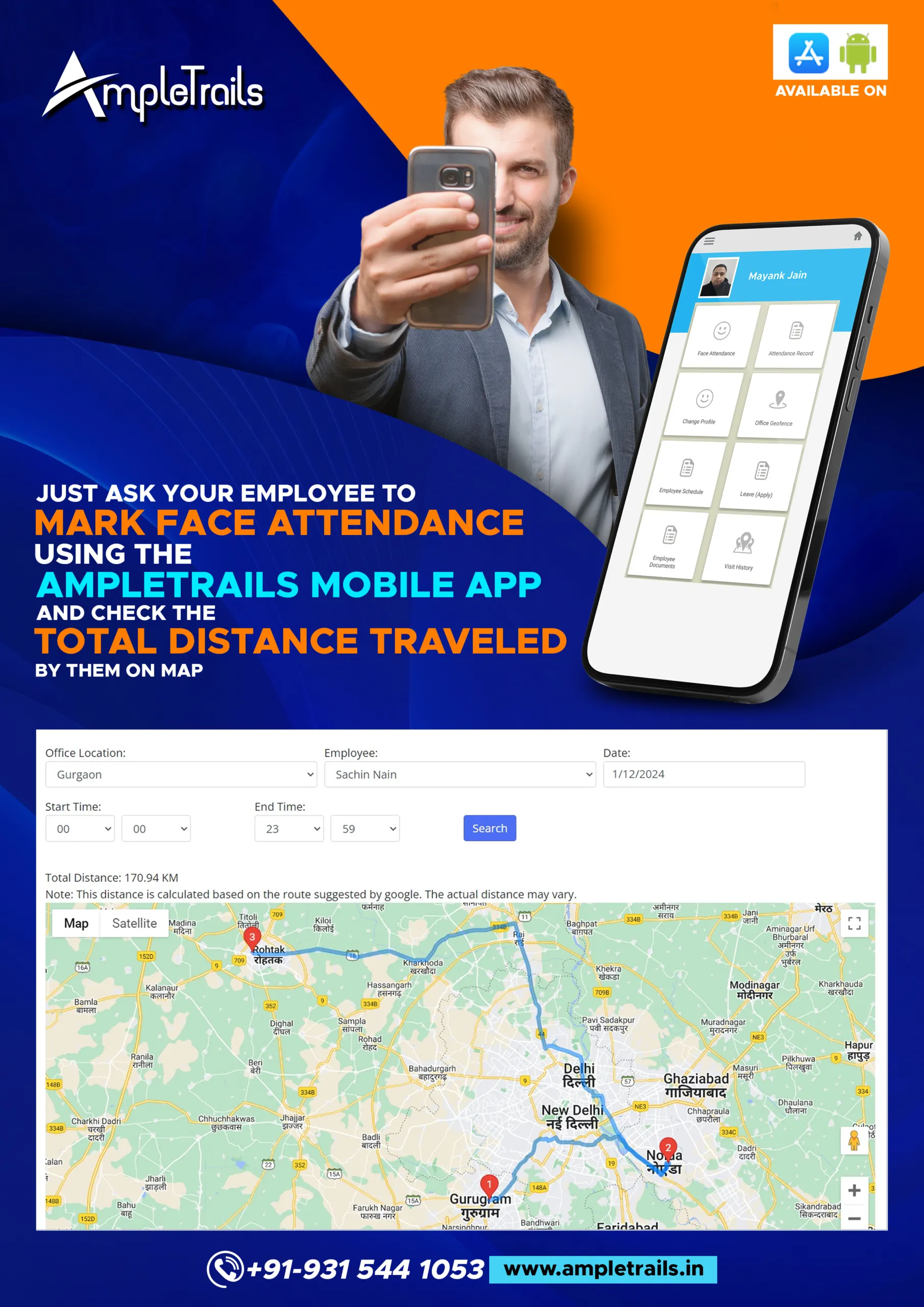Attendance App with Face Recognition
Streamlining Attendance Management using Face Recognition App
Organizations are always looking for effective solutions for attendance management. One major innovation in this regard is the face recognition attendance app. The technology helps because it automates the attendance mechanism, improving accuracy and efficiency.
Ease of Use and Security
The facial recognition feature in attendance software is easy to use and offers strong security. Employees can quickly clock in without hassle, and employers have peace of mind knowing that each person’s identity is verified accurately. This blend of convenience and safety makes it a trustworthy choice for everyone involved.
Tracking Distance Traveled
The app has a feature that tracks how far you travel. This feature is really useful for workers who are always on the move. It gives detailed information about their travel patterns, which helps with planning and logistics. Companies can use this information to improve routes and schedules, saving both time and resources. This ultimately increases productivity for the company.
Contact Us for More Information
Streamline Employee Management with a Face Recognition Attendance App
In today’s fast-paced business world, it is important to know when your employees are working. Mobile face recognition attendance apps are revolutionizing the way we manage this. They provide a quick, accurate, and secure means of tracking attendance. They are essential to businesses in today’s day and age.
Benefits of Face Recognition in Attendance Systems
Using face recognition in attendance systems has several benefits. The best of these is improved security. It ensures that only the real employee gets to mark their attendance, and no one else marks for them. The technology makes the process quicker, with employees able to quickly check in and get started on work.
Real-Time Distance Monitoring and Location Tracking with Face Recognition Applications
The applications boast a wonderful feature: they can monitor the location of employees in real-time and approximate how far the employees travel while at work. This is highly useful for field-based firms since it gives them data on the movement of their workers throughout the day. This allows for improved workforce management and efficient utilization of resources.
How the App Computes Distance Covered Attendance App with Face Identification
The app estimates the distance covered by continuously taking geolocation coordinates (latitude and longitude) while you travel. These coordinates are then mapped on a map to plot your path. The distance between the points is estimated through sophisticated algorithms taking into account the curvature of the Earth and the probable paths traversed.
Every segment between two points is quantified, and adding all of them gives the overall distance covered. The accuracy of the app to compute distance relies on how often and accurately it gets geolocation data.
Seamless Integration and User-Friendly Experience
These mobile attendance solutions are user-friendly and can be easily integrated into your current HR management system. The simple interface makes it easy for the employees to mark their attendance without any inconvenience, and the management can easily view the attendance records for analysis and reporting.
Taking a Mobile-First Strategy
In this mobile-first era, taking on a system that can be accessed through employees’ smartphones is the way to go. Not only does it ease the process but also caters to the tech-savvy attitude of today’s workforce.It also accommodates remote work arrangements, which are becoming increasingly popular.
Scalability and Customization
The other advantage of these systems is that they are scalable and customizable. They can be customized to meet the specific needs of your business, either a small business or a large corporation. As your business grows, the system can be scaled to accommodate more users as well as more advanced requirements.
Integration with Third-Party Systems
This system can be opened up for integration with various third-party software, i.e., HRMS and SAP systems. There are several means through which this integration can take place:
SQL Database: This data can be imported into a table in an SQL database so that it becomes readily accessible as well as modifiable within the database platform.
FTP: The system can send data files using FTP (File Transfer Protocol), which allows for easy data sharing between platforms.
API: Application Programming Interface (API) integration allows for real-time data communication and control among systems and external applications.
Such capabilities of integration allow the system to be able to accommodate multiple operating requirements, improve data flow and between-system interoperabilit

